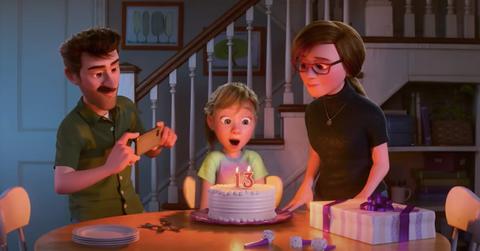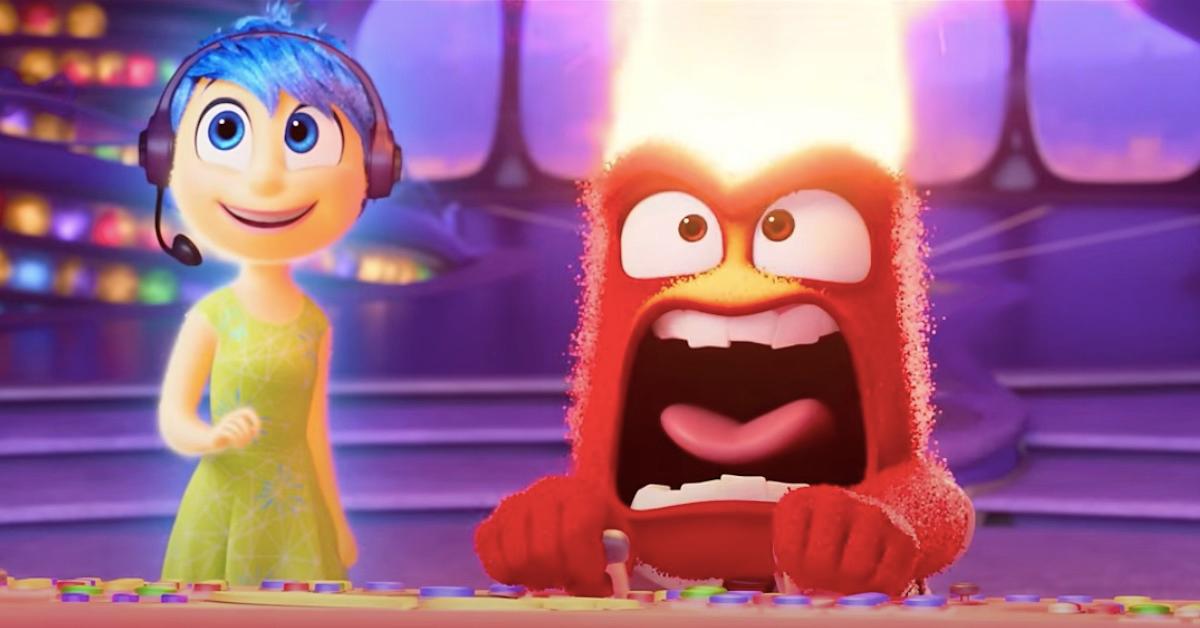Why Does Riley Have Both Male and Female Emotions in 'Inside Out'?
"I remember, we talked to John and he said, ‘Well, I thought you did it because, as adults, we become more kind of set in our ways. As a kid ... anywhere is possible,’" the film's director said.
Published June 19 2024, 10:42 a.m. ET
Fans of Inside Out have flocked to theatres to see the sequel of the movie that won big with audiences initially back in 2015.
But some of the lingering questions about the thought process behind creating the film remain with Inside Out 2.
For instance, as we see the inner workings of a girl named Riley's mind, why does she have both male and female emotions, like Joy and Anger, voiced by Amy Poehler and Lewis Black, respectively?
Read of to hear a few theories.
Why does Riley have both male and female emotions in the 'Inside Out' movies?
In the first movie, we meet Riley at age 11. She already experiences multiple emotions such as Joy, Sadness, Fear, Anger, and Disgust, which reside in the control center of her brain, and are voiced by male and female celebrities like Bill Hader and Mindy Kaling.
There are various theories about why Riley has both male and female emotions.
The first film's director Pete Docter said in 2015 about a conversation with the founder of Pixar, "I remember, we talked to John and he said, ‘Well, I thought you did it because, as adults, we become more kind of set in our ways. As a kid, you can... anywhere is possible.’"
Indeed, Riley's parents' emotions are purely male and female.
John Lasseter meanwhile said that another reason Riley has male and female emotions and her parents don't is that, well, it would be too confusing for young viewers if all three characters were that multi-faceted.
Talking about the dinner scene in the first movie, he explained, "For the comedy of it, we’re cutting between 18 characters and four locations in that dinner scene, so we just went broad with it — kind of how SNL would do it. They all have like dopey obvious mustaches or big red glasses so that you’re instantly clear on, ‘Oh, it’s mom; it’s dad.’"
The newest iteration of the franchise, Inside Out 2, directed by Kelsey Mann, catches up with Riley two years later at the age of 13.
She still has male and female emotions, with some notable age-appropriate additions.
For instance, we meet Anxiety (Maya Hawke), Envy (Ayo Edebiri), and Embarrassment (Paul Walter Hauser).
These of course are the years of figuring out who you are and could be why Riley still has male and female emotions. If we were to get an Inside Out 3 and find out what the main character is doing, say, at the age of 20, maybe Riley would only express her emotions via one gender? Or, perhaps as The New Yorker's reviewer put it, "we all contain multitudes."
Another theory about why Riley has both male and female emotions is that she is gender fluid.
Per The Parent Watch, another take is that Riley is gender neutral or gender fluid. If this was the filmmakers' intention, then they don't directly discuss it in the first or second movies, so it's open to interpretation.

